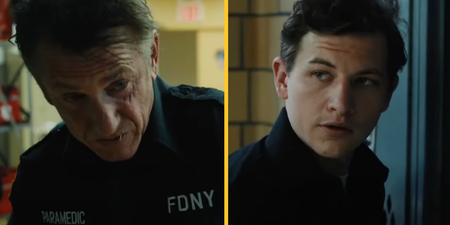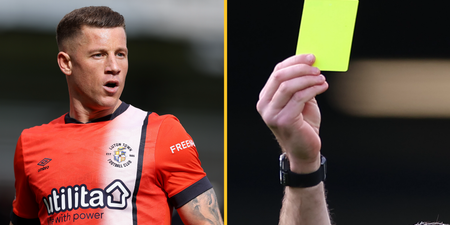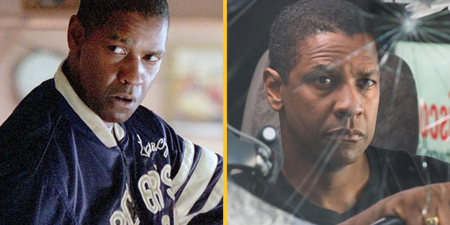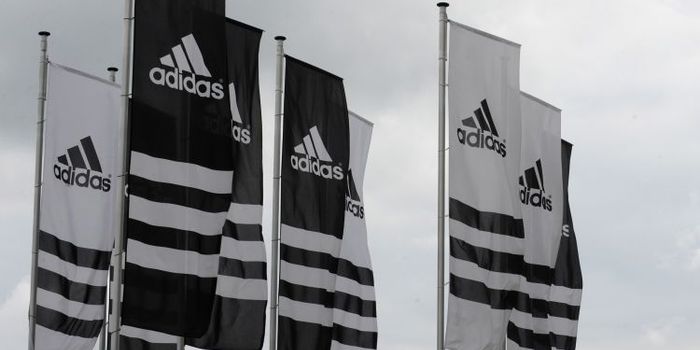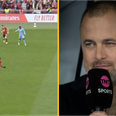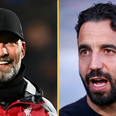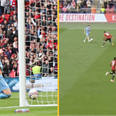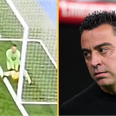Herzogenaurach, Germany
It was warm. Too warm. Sweltering in fact, as the coach put on its reverse signals and attempted a three-point turn in a vehicle as long as the summer on a narrow gravel road. In the mirror above his head I could see beads of sweat run down the forehead of the driver. It was too hot for this, someone muttered, and they began to run down my own.
When we eventually found our way into the right entrance for Adidas HQ, and there were many, including an entirely new portion of the complex being built from scratch, it reminded me of a Centre Parcs – a Utopian, geese-less, Brit-less, geese shit-less Centre Parcs.
A better Centre Parcs, essentially. A cleaner, more efficient Centre Parcs, if such a thing were possible.
There is a village for all of the workers at Adidas HQ and through it runs the street named after the brand’s famous creator, the Adi-Dassler-Strasse. Dassler’s finest moment came when acquiring the now ubiquitous three-stripes logo in 1952 for the sum total of €1600 in today’s money and two bottles of whiskey – also two bottles of whiskey in today’s money – from Finnish sportswear brand Karhu.
Probably considered a great deal at the time, it must now be considered the second greatest deal in the history of deals, second only to Michu to Swansea for two million Great British pounds.
Dassler also persuaded Jesse Owens to run the 1936 Berlin Olympics in Adidas spikes, which Owens dominated. Four gold medals later and the brand was selling 200,000 shoes per year.
It should have proved more important, it wasn’t. Nobody associates Adidas with the greatest track and field athlete in history. Not compared to those three thick, bold lines.
The introduction to the tour came in the sports science lab, half an artificial football pitch surrounded by computers and a single football boot attached to a robot leg, attached to what can only be described as a machine that looked like, if it turned sentient, could probably take down a significant portion of the Avengers.
Maybe not the Hulk, or full God of thunder level Thor, but it could definitely punt Spiderman and Iron Man and Captain America into oblivion.
The sports lab was tucked away though, through a guarded security door, hidden within a main building that reminded me of an M. C. Escher drawing; stairs seemingly coming out of the walls and leading to nowhere and my perspective skewed by the sheer angles, the glass and the light.
In fact the glass was so spotless that I asked our disarmingly attractive tour guide where the toilets were whilst attempting to walk through a thick plate of it, as though I had suddenly become a spectre of my own self.
This was soon physically realised when the guide asked if I was OK through subdued laughter. Scurrying off to relieve myself and taking special care to navigate exclusively through gas this time, I wasn’t sure if I would ever be OK again.
That was another thing about Adidas HQ that became more and more evident as the day wore on: everyone who worked for Adidas, or everyone who just happened to be trapped in this crystalline kingdom – I didn’t actually see anyone doing work, or at least work as I imagine it – was ridiculously, hopelessly young and attractive.
Beards, tans, coconut water, canvas rucksacks, protein shakers; all the signs of life were there as all the handsome people milled around with coffees in hand, not visibly working, but probably thinking about it at least – mentally arranging brunches and deleting notifications from their phone calendars.
It wouldn’t be a complete surprise if the place turned up in Westworld. First a quick visit to the shōgun period Edo to learn the ways of the samurai, back to the Wild West for a quick bourbon in the saloon, then finally over to Adidas Headquarters to navigate endless staircases, invisible glass panels and fight the endless horde of fit, healthy people coming out of the walls and making you think about actually using that gym membership of yours.
Maybe this just is their work. What better way to represent a sports brand than to physically embody it to the point they are walking, talking adverts for the three stripes themselves?
Overhead bird sounds could be heard. I didn’t see any birds: I was convinced they were being played out of a speaker I couldn’t see protruding from the glass ceiling miles above, someone else was adamant they were actually flying about, lost in the riddled dimensions of the painting.
The lead creatives involved in the designing of the signature boots, balls and kits for this summer’s World Cup in Russia struck me as both genuinely intelligent and passionate, having multiple convincing answers for questions meticulously and creatively designed for them not to have answers for.
Product Director Rob Ashcroft and Creative Director Sam Handy were talking me through the x18+ – the new lighter than light, high-tech masterpiece launched for the World Cup – when I asked what they thought about Toni Kroos defiantly wearing the same pair of boots since 2014.
I had them cornered.
So much so that after a long pause I sympathetically offered that it is actually a testament to the boot itself, that such a player was so comfortable in what must now be considered an obsolete design.
After all, they are perpetual masters of the future, presumably offended by the ridiculous features of old like being made entirely out of leather and having those… what are they called again? Laces, that’s it, having those laces that were all the rage back when the Allies played the Germans in no man’s land and have never been seen since.
They told me their newest signature boot is designed for explosive players. They didn’t need to really, the giant posters of Gabriel Jesus and Mo Salah draped on the walls said enough.
These players, according to research, only have control of the ball for a total of nine seconds during a full 90 minute match. Scarcely believable the first time you hear it (like all the best stats), it’s plausibility came to me like a text notification ding as I watched Rob turn his phone torch on, place it inside the boot, and light up its mesh outer lining like a Chinese lantern, or a lightbulb above a head.
They reassured me they speak to Toni a lot about his boots and simply put it down to superstition. Players form a connection with certain models and he had methodically swept to World Cup glory in his Adipure 11pros (standard black and white with a subtle light blue trim), a noir film screening amidst the technicolour laser show around him.
Why would he change?
Sometimes you stand out with nouveau extravagance at the very cusp of change itself, sometimes you stand out by never changing what got you there in the first place. For Toni Kroos it’s pass and move ad infinitum and technique so consistent that you could overlay video of all his free-kicks, corners, and raking, penetrative cross-field passes over one another and only see the faintest hints of deviation, the ghosts of change.
When Kroos bent in that stoppage time free-kick against Sweden to keep Germany alive in the World Cup he did so wearing the exact same pair he did whilst running amok in Belo Horizonte four years earlier, the best player on the pitch for the best team in the world, tearing this year’s favourites apart like a dog with a chew toy or some old football boots.
The arc and path of his goal, out and in even sharper than the greater-than symbol, was a feat of sublime mathematics in its own right.
Kroos only had an area of the goal the size of a letter to aim for, not so much a window of opportunity as a slit in a post box.
“That’s the hard part of working for Adidas… you have to make people fall in love with the new shoe despite the old one still being loved,” Handy told me.
Perhaps he didn’t realise that that’s the hard part of being a football fan too.
Nothing in the present will ever grab hold like a memory of the past. The new can’t compete with the old, not when it has the indeterminable advantage of distance. The further away something is the more we want it, to hold it near. Then greater-than now, now lesser-than then and as the years pile up the disparity grows, the original thing becoming much more than itself, physically and emotionally weightier than the modern woven-mesh equivalent.
A similarly provocative tactic with Dean Lokes, VP of Product, as he talked me through the history of Adidas footballs that have been at the centre of it all ever since the Telstar debuted at the 1970 World Cup in Mexico. It soon became the 32-panelled black-and-white definitive symbol of what a football should look like, or at least, what it looks like in American high-school movie’s requisite soccer practice scene.
Look on your phone and you will see the Telstar, a relic of the past coming to grips with the future, the ball named after the world’s first communications satellite and designed to stand out on colourless television sets, a hieroglyphic now an emoji.
It lives on in the flesh too as the Telstar 18 embellishes the thirsty pitches in Russia, its pentagons pixelated blurs at the edges, shapes without a name, and its seams completely eradicated for something close to perfect seamlessness. No signs of its construction must be shown, as though the thing had just dropped from the sky, an orb from the future.
But without the casing it looked like mummified plaster-cast of a past version, not a Russian doll but a Russian doll’s football. A re-replication of the past, a tinge of nostalgia Adidas attempt to turn into a wave.
The design of a football is essentially meaningless for the fans because your favourite is always the first one you remember seeing during a World Cup. I asked for his, which was the Telstar, and he asked for mine, 2002’s exquisite Fevernova.
For a moment I was left unsure if it was actually the colour of champagne or that was just the sepia-filter ache of longing overlaid onto my memory of it. It’s more telling than your actual age, I think, your favourite football.
For the generation between us it was almost unanimously the Tango, for the generation between myself and the South American dance enthusiasts it was almost unanimously the Questra.
There’s always something about the first one, the first time. Everything else is just a pale imitation, a spectre of its former self.
The more I saw of Adidas HQ the more it became clear just how perfectly enclosed it actually was, a pristine bubble with tennis and basketball and sand volleyball courts. There was even the less predictable sight of an outdoor rock climbing wall, perhaps used by employees who do their best thinking suspended 30 feet up in the air and clinging on to something.
At one point a man walked past me with a bow and several arrows loaded into the quiver on his back. It was left unclear whether there was an archery range, this was simply how the security staff operate or this really was a park in Westworld. The grounds themselves were perfectly sculpted, surrendering to giant angular structures looming over them like the point of a sundial. Robot lawnmowers patrolled the scenery as we walked through the place, attempting to process that this is where people actually come to work. Or to just mill about drinking coffee.
There is even a miniature athletics stadium and grandstand contained within the complex – the Adi-Dassler Sportplatz – complete with a full eleven-a-side pitch with grass meticulously cut to a specific height, although this was probably done by an actual human being.
I had witness Bayern Munich’s 18/19 kit unveiling the night before in an industrial nightclub, they often trained here when visiting their famous kit sponsors.
Everyone of a certain disposition cannot resist playing with a football should it appear in front of them and so it proved when I found one sat lonely on the pitches during lunch.
A crowd, head to toe in the appropriate apparel, were shooting at one of the goals. Rudely, I was not deemed an ‘influencer’ and couldn’t take part in the various drills that the apparent Japanese YouTube stars were more qualified for, despite continuously blazing high and wide of the white frame.
I wanted to shout at them to keep their head over the ball, but I remembered that nobody watches the watchmen. Who could possibly influence the influencers?
Evidently not bitter about the fact, I remained alone in the centre circle, doing keepie-uppies as the sun beat down on my back and more sweat began to re-soak my brow. My elongated shadow cut the grass at an angle, as sharp as the greater-than symbol, now my own personal sundial.
Soon the dark point looped round and I had to head back inside, the tattered trousers at the knees schoolboy reluctantly returning to the classroom.
But then again, after lunch I got to meet the man in charge of the robot leg.
Unsurprisingly, he instantly became the coolest person I had ever met. He told me his name was Harry Koerger Director of Sports Science, as though the job title had simply become a part of him like a mechanical limb. He wore jeans and Sambas and his sleeves rolled up, a mad professor crossed with your favourite pint-buying uncle.
I trusted him, basically. I volunteered to have the robot foot fire knuckleball free-kicks at me at speeds of up to 160km/h (context: a lot harder than Roberto Carlos) whilst standing behind a safety panel. Squinting, this time I made sure the glass was actually there.
Fortunately the ball thudded against the screen pressed against my nose rather than my nose itself, proving that it was in fact there. The tell-tale scratches and marks became increasingly apparent as more blurry footballs were fired at me, tracked on a computer by the Hawkeye system on the roof following its path and arc, tracing
There was only ever the slightest deviation.
Harry went on to tell me about the unsuccessful versions of the machine: there was one in the 90s constructed with hip and ankle joints that would just break constantly, screws flying everywhere, and there was one more recent test run when the foot was calibrated wrong, trapping the football into the tee-off area and popping it into a million pieces like confetti.
The machine strikes the ball like a player and can recreate a true flight with no rotation, such as Cristiano Ronaldo’s free-kick against Spain, even though it winds up more like a catapult than a human leg.
Jokingly I asked him whether he had ever set the machine to purposely scuff shots at goal like bad football players often do.
He seemed genuinely confused and genuinely, actually, extremely German. “What is a bad player?”, he replied.
After weighing up the likelihood of this man knowing about Lee Cattermole I told him I didn’t know either. Maybe there are no bad players, only bad interpretations and context.
Who’s to say whether Lee Cattermole wouldn’t have been part of England’s victorious 1966 squad had he been born 50 years earlier, held aloft on the shoulders of Geoff Hurst and Martin Peters instead of Bobby Moore? And who’s to say that the thought only crossed my mind because I was having a football fired at some Perspex in front of my head at high velocity?
The final stop of the day was the kit design room with a man called Jürgen Rank, happily adorned in the glorious green Germany away kit with “Name 10” on the back. Great player that Name. Have always liked him.
It was the story of the throwback Germany home shirt that monopolised much of our conversation though, the jersey itself selfishly monopolising much of the love of football fans before the tournament, a reinvigorated update of the glorious 1990 number that West Germany wore throughout their third World Cup triumph.
Jürgen tells me that because of this, the shirt’s appeal has remained evergreen. “It could well be the most universally admired piece of German attire since Lederhosen,” is what I thought would be a funny thing to say. I also thought it would be good to keep to myself.
Jürgen is arguably the man responsible for the current upward trend in football shirts, driving his Adidas team towards reimagining the fans wearing the shirts not inside the stadium but in the pub and in bars, to five-a-side, maybe out to a day rave in the murky depths of an east London car park.
There has been a conscious effort to create designs that endure long after the tournament has gone, from Japan’s Sashiko stitching wonder to Colombia’s canary yellow flash of a shirt worthy of Valderrama himself, who, let’s face it, wouldn’t be given a second thought if he popped up at the back of a Boiler Room set with two sets of gun fingers, a bumbag and a water bottle.
The discussion moved to its inevitable conclusion. England. England and Germany, Germany and England.
He revealed, to my shock and genuine disgust, that he wasn’t all that bothered about Germany’s chances in Russia, noting that a fifth star above the crest (denoting amount of titles won) would be, in his words, “a design problem.”
He needn’t have worried as Germany crashed out of the group stages in spectacular fashion after losing to South Korea 2-0 in their final match. All is well back there in the Adidas design room, I hope.
Funnily enough Germany’s shirt, perhaps the bookies’ favourite as the one that would endure long after Russia 2018, was immediately hit with heavy discounting after their abrupt exit from the tournament. It appears we won’t see this one resurrected 30 years down the line, even with the generous Instagram filter of the gentle beautifying frame of time.
In a way, that’s why we love the World Cup. Even as things ostensibly get better, turning lighter, faster and increasingly seamless, it reminds us of where we were once.
Maybe it’s the first time you saw a ball on a television, the first time you kicked one, the first time you curled in a last-minute free-kick at the World Cup.
Maybe it’s the time you won it all, maybe it’s the time you didn’t.
Maybe it’s just the fact you actually made it there.
There is one thing that still fascinates me about the shirt though – the lines through the chest. At first glance they gradually fade from black to grey like an old television turning on and heating up before succumbing to the static.
But they don’t fade and the colour doesn’t change. The spaces between them just get slightly further apart and it’s our life, echoing itself, over and over again, three thick bold lines.
RELATED ARTICLES
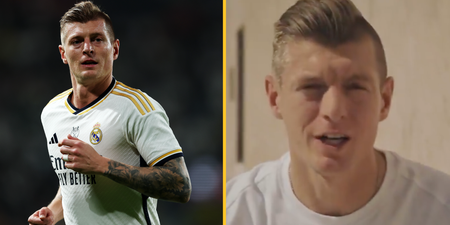

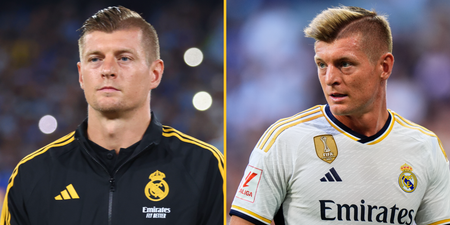
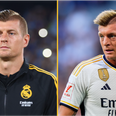


MORE FROM JOE
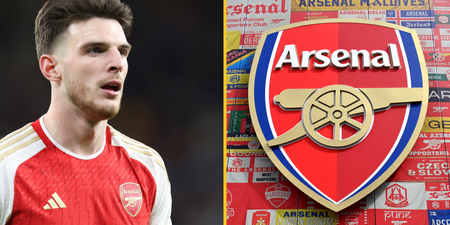
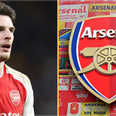
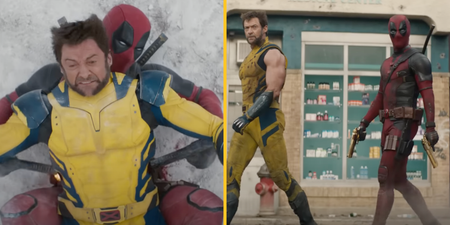
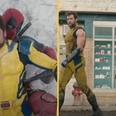
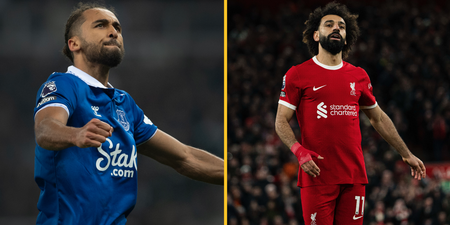
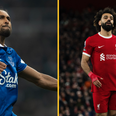

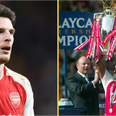
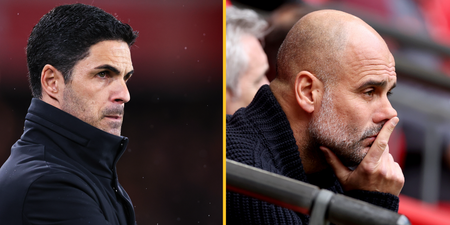
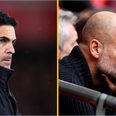
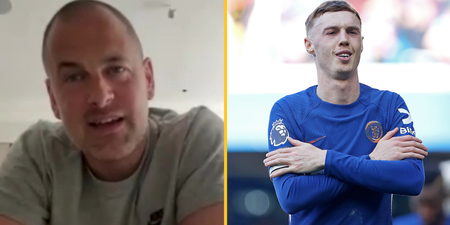





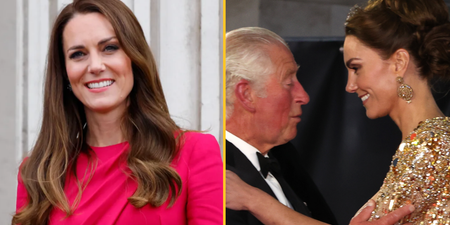







MORE FROM JOE
